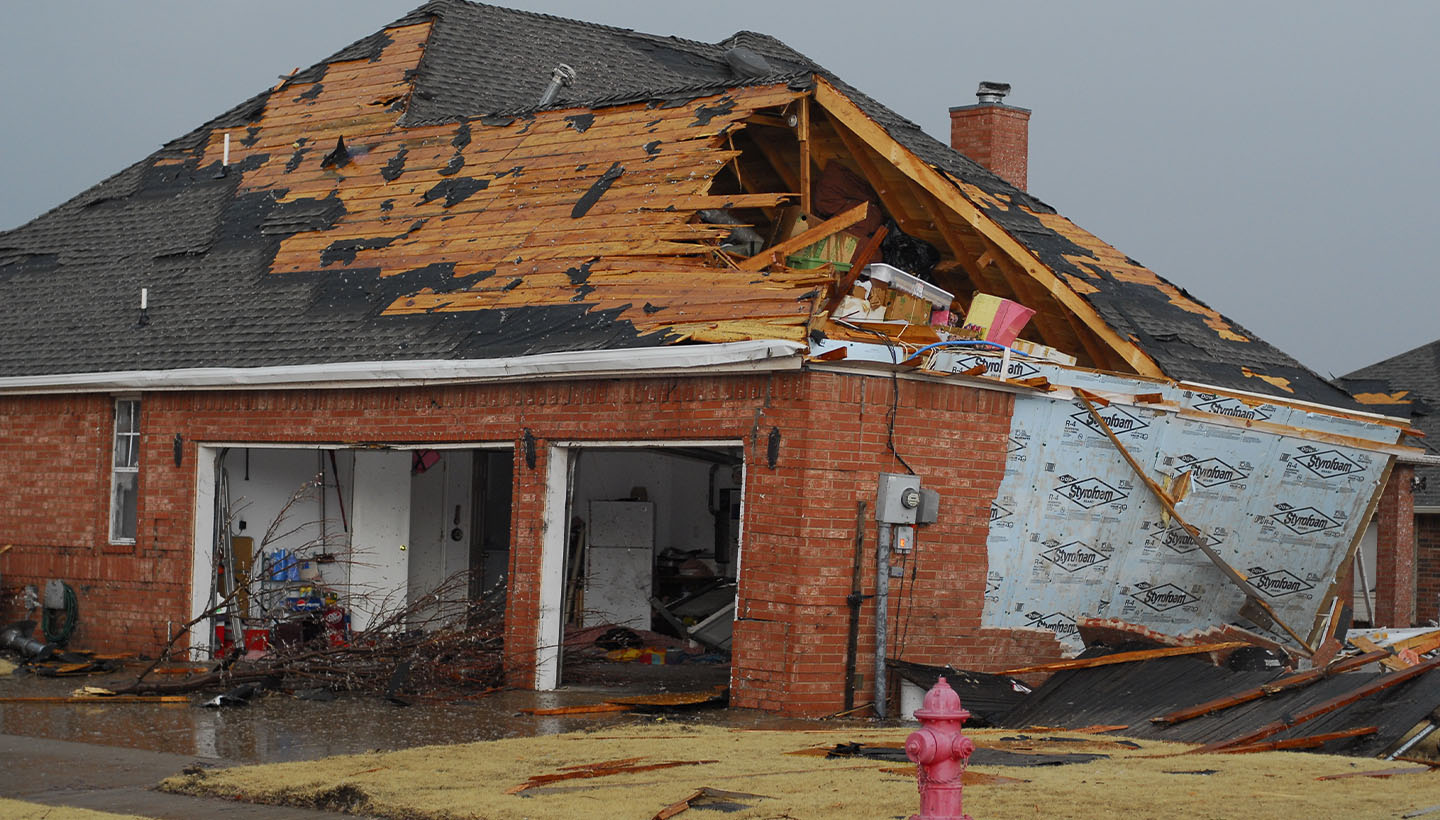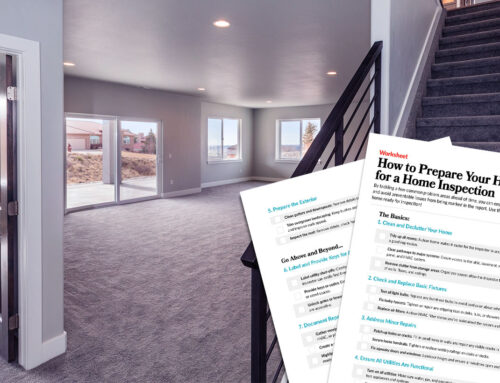
Wind Mitigation Inspections: How to Protect Your Home & Save on Insurance
Strong storms and high winds can strike fast and cause costly damage to your home. A wind mitigation inspection helps reduce your home’s risk of storm damage. This fast, affordable inspection can also reduce your homeowners insurance costs and may even be discounted through incentives in your state.
Whether you’re a homeowner learning how to protect your home or a home inspector curious about offering wind mitigation inspection, keep reading. Let’s break down wind mitigation inspections, why they matter, how they help homeowners save money, and who needs one.
What is a Wind Mitigation Inspection?
A wind mitigation inspection (or wind mitigation survey) evaluates your home’s overall resistance to wind damage. During this type of inspection, a licensed wind mitigation inspector examines your roof, walls, windows, and other key home features to evaluate how well they withstand heavy winds.
Following a wind mitigation inspection, you’ll receive a detailed inspection report outlining your home’s protective features and areas for improvement. Many insurance companies use this report to calculate discounts on homeowners insurance policies. Plus, depending on your state, you could be eligible for extra discounts on wind-resistant upgrades for your home.
Why a Wind Mitigation Inspection Matters
Think of wind mitigation inspections as safety checks, no matter where you live in the U.S. They help in three ways:
They Protect Your Home Before the Next Storm
A wind mitigation inspection identifies your home’s weak spots — areas that are especially susceptible to wind damage. These include your roof, windows, doors, and garage. The information you learn about your home during a wind mitigation inspection can help you make storm-resistant improvements and reinforce the durability of your home — and increase your family’s safety — during inclement weather.
They Help Lower Your Insurance Premiums
Houses built or upgraded with storm-resistant features generally pose less risk for home insurers. Insurance companies reward this. Providing your insurance company with your wind mitigation inspection report could net you discounts on your premium.
They Make You Eligible for State Incentives
If you live in a hurricane-prone state, “tornado alley,” or a state with greater wind damage trends, you might qualify for savings on new wind-resistant home features. For example, Florida state law requires insurers to offer discounts for approved wind-resistant features. Homeowners are also eligible to apply for grants covering wind mitigation inspections and home improvements.
What Wind Mitigation Inspectors Look For
During a wind mitigation inspection, a licensed inspector will evaluate six primary home features that determine your home’s wind resistance. These include:
| Home Feature | What the Inspector Evaluates |
|---|---|
| Roof Covering | The type and condition of roofing material, such as shingles, tiles, or metal. |
| Roof Deck Attachment | How securely the roof is fastened to trusses or rafters. |
| Roof-to-Wall Connection | The strength of the ties or straps holding the roof to exterior walls |
| Roof Shape | The slope of your roof. For example, hip roofs (sloped on all sides) handle wind better than gable roofs. |
| Secondary Water Barrier | The layer under the roof that prevents leaks if shingles blow off. |
| Opening Protection | Impact-resistant windows, doors, and shutters that block debris and pressure. |
What to Expect Before and During a Wind Mitigation Inspection
Wind mitigation inspections are fairly quick and simple.
Before a wind mitigation inspection, you’ll need to:
- Clear access to your attic, roof, and windows.
- Gather permits or documentation for upgrades you’ve made.
During the inspection:
- The inspector will evaluate your roof, connections, and openings.
- The process usually takes less than an hour.
After the inspection:
- You’ll receive a wind mitigation inspection report.
- The report will include an explanation of your home’s wind mitigation features and recommendations for improvements.
- You can then submit it to your insurance provider and claim eligible discounts.
What to Do After You Receive Your Wind Mitigation Report
After your inspection, you can take a few steps to reduce your home’s risk. You’ll want to:
- Review the Recommendations: Thoroughly review the inspector’s recommendations for upgrades that can strengthen your home’s wind resistance.
- Submit Your Inspection Report: Send your wind mitigation report to your insurer, who can then confirm your eligibility for discounts.
- Make a Plan for Improvements: Consider upgrading to hurricane- or storm-rated windows, stronger garage doors, and a reinforced roof.
- Schedule Re-Inspection Following Upgrades: Your insurance company will want to verify improvements you made and apply updated discounts.
Choosing the Right Wind Mitigation Inspector
Just as you would choose a licensed home inspector to inspect your home, you want to choose a licensed and trained wind mitigation inspector.
Be sure to:
- Look for a professional who is licensed and certified to perform wind mitigation inspections in your state.
- Consider an inspector who is already experienced in this type of inspection.
- Choose an inspector who will be communicative and clear when explaining your report and next steps.
Be sure to check online reviews and ask for references before you schedule your inspection. Additionally, see if your state may have an approved list of licensed and vetted wind mitigation inspectors to begin your search. For example, Louisiana’s State Uniform Construction Code Council maintains a list of authorized wind mitigation surveyors ready to perform inspections.
Frequently Asked Questions About Wind Mitigation Inspections
How often should I get an inspection?
Every five years or after major upgrades, such as a new roof or new windows.
Are Wind Mitigation Inspections Required?
Usually not, but most insurers and inspectors recommend it. The potential savings and peace of mind are worth it.
Can my home fail a wind mitigation inspection?
No. Just like standard home inspections aren’t “pass/fail” tests, wind mitigation inspections are evaluations. The inspection report simply outlines the wind-resistant features of your home and opportunities to improve them.
What’s the Difference Between a Wind Mitigation Inspection and a Four-Point Inspection?
Wind mitigation inspections focus on your home’s ability to resist wind damage and whether you qualify for insurance discounts. Four-point inspections evaluate the four major systems of your home: your roof, electrical system, plumbing system, and HVAC system. Depending on your insurer’s requirements, you might need one of these inspections or both.
How Much Does a Wind Mitigation Inspection Cost?
Wind mitigation inspections typically cost between $75 and $150, depending on your home’s size and location. This fee often pays for itself through your insurance savings within the first year.
Do I Need a Wind Mitigation Inspection for a New Home?
Yes, just as with new construction home inspections, wind mitigation inspections for new homes are a good idea. Even newer homes can benefit, because the inspection confirms that all wind-resistant features were installed correctly. Plus, it can still qualify you for insurance discounts and state incentives.
For Home Inspectors: How Do I Become a Wind Mitigation Inspector?
Whether you want to branch out into a focused specialty or add this service to your offerings, becoming a wind mitigation inspector can add a healthy revenue stream to your business.
To become a wind mitigation inspector, you’ll typically need to earn a state-approved license or certification. In most states, only licensed general contractors, building contractors, home inspectors, engineers, or architects can perform wind mitigation inspections.
If you’re already a licensed home inspector, you can expand your services by completing continuing education or specialized training in wind mitigation. The International Association of Certified Home Inspectors™ (InterNACHI™) offers a certified wind mitigation inspections course for home inspectors. These courses cover wind-resistant features, inspection procedures, and reporting requirements.
Once you’re certified, you can start offering wind mitigation inspections, helping homeowners strengthen their properties and save on insurance — all while carving out a new inspector niche.
Resources to Learn More About Wind Mitigation Inspections
Whether you’re a homeowner looking to protect your property or a home inspector ready to expand your services, a wind mitigation inspection is a smart move. Check out these resources to learn more.
- Policygenius: What is a Wind Mitigation Inspection?
- State Farm: Understanding Wind Mitigation and Its Benefits
- Angi: The Essential Wind Mitigation Inspection Checklist
Learn More About Home Inspection with AHIT
Want to learn more about home inspection? Bookmark AHIT’s home inspection blog and dive deeper into home inspection knowledge and trends. Curious about a career as a home inspector? Learn how to become a home inspector, how much you can make, and how to get licensed in your state. AHIT makes it easy!




